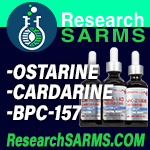LG,
The below extract is from Medscape.com, and it would seem that there are no known interactions with AAS, specifically Primo. There are some interactions that I did not copy, so if you are on meds, you may wish to check the site. I listed oral contraceptive info for the obvious reason, and the theophylline because I know some BB use it and I THINK that DNP and Theophylline have similar cross reactions. (but I am not sure)
I hope this helps...
BE
================================================================================
Fluconazole is used in the treatment of oropharyngeal, esophageal, or vulvovaginal candidiasis and in the treatment of other serious systemic candidal infections (e.g., urinary tract infections, peritonitis, candidemia, disseminated candidiasis, meningitis, pneumonia).
Vulvovaginal Candidiasis.
For the treatment of vulvovaginal candidiasis, adults should receive a single (1 day only) 150-mg oral dose of fluconazole. To prevent relapse of vulvovaginal candidiasis in women with a history of recurrent infections, a single 150-mg oral dose of fluconazole has been given at monthly intervals (given 1—4 days after menstruation). Alternatively, 100-mg doses have been given once weekly for 6 months.
Site Map Your Account Support About Us
Offerings: Medscape.com Charts Mobile Logician CBSHealthwatch
Home Site Map Marketplace My Medscape CME Center Feedback Help Desk
DIFLUCAN ORAL
Drug Interactions
Drug-Drug Interactions from First DataBank
These drug interactions are reviewed by an editorial panel at First DataBank and determined to be clinically significant.The list does not include every interaction ever reported.
Contraindicated
CISAPRIDE/AZOLE ANTIFUNGAL AGENTS
Severe
None listed
Moderate
AZOLE ANTIFUNGAL AGENTS/ANTICOAGULANTS
AZOLE ANTIFUNGAL AGENTS/HYDANTOINS
AZOLE ANTIFUNGAL AGENTS/RIFAMYCINS
AZOLE ANTIFUNGALS/SULFONYLUREAS
CELECOXIB/FLUCONAZOLE
CYCLOSPORINE/AZOLE ANTIFUNGAL AGENTS
SELECTED BENZODIAZEPINES/FLUCONAZOLE
TACROLIMUS/AZOLE ANTIFUNGALS
Drug-Food Interactions from First DataBank
Most Significant
None listed
More Significant
None listed
Significant
None listed
Less Significant
None listed
Minor Significance
None listed
Drug Interactions from AHFS DI™
While fluconazole can alter the pharmacokinetics of certain drugs that undergo hepatic metabolism, the magnitude of such alterations appears to be less than those associated with ketonazole; however, comparative studies have not been performed to date. In addition, the possibility that the risk of developing such interactions may be increased at relatively high fluconazole dosages (e.g., 200 mg daily or more) should be considered.
Oral Contraceptives
Concomitant administration of fluconazole and oral estrogen-progestin contraceptives reportedly does not produce clinically important effects on the pharmacokinetics of the contraceptives. In healthy premenopausal women receiving oral contraceptivesand 50-mg oral doses of fluconazole given once daily for 10 days, the mean increase in AUCs of ethinyl estradiol and levonorgestrel was 6 (range: -47 to 108%) and 17% (range: -33 to 141%), respectively. In addition, in a controlled study in healthy women receiving oral contraceptives concomitantly with 200-mg oral doses of fluconazole or placebo for 10 days, AUCs of both levonorgestrel and ethinyl estradiol were increased substantially in women receiving oral fluconazole compared with those receivingplacebo; mean increases in AUCs of ethinyl estradiol and levonorgestrel were 38 (range: -11 to 101%) and 25% (range: -12 to 82%), respectively. However, in some women ethinyl estradiol and levonorgestrel concentrations decreased by 47 and 33%, respectively. The manufacturer suggests that decreases in ethinyl estradiol and levonorgestrel concentrations may be the result of random variation. While limited data indicate that fluconazole may inhibit metabolism of ethinyl estradiol and levonorgestrel, there is no evidence that fluconazole is an inducer of ethinyl estradiol and levonorgestrel metabolism.
Theophylline
Concomitant administration of theophylline and fluconazole increases serum theophylline concentrations. In a study in healthy adults, administration of a single dose of IV aminophylline (6 mg/kg) after 14 days of oral fluconazole (200 mg daily) resultedin a 21 or 13% increase in the mean AUC or peak plasma concentration of theophylline, respectively, and a mean decrease of 16% in theophylline clearance; the half-life of theophylline increased from 6.6 to 7.9 hours. The manufacturer recommends thatserum theophylline concentrations be monitored carefully in patients receiving fluconazole.



 Please Scroll Down to See Forums Below
Please Scroll Down to See Forums Below 












